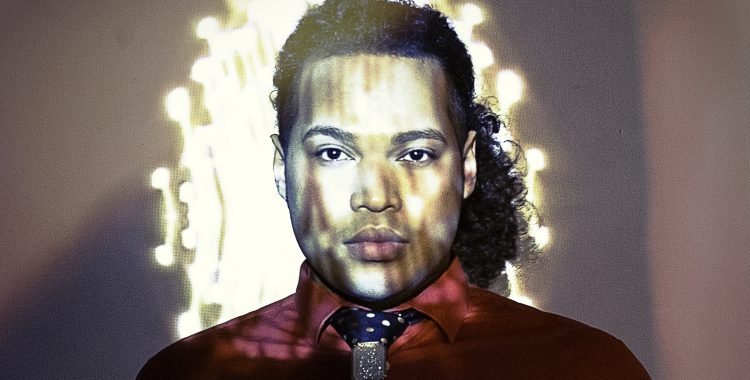
Jo Lee would say that life has been the best voice teacher and determination taught them how to write, compose and produce. Born and raised in Brooklyn before the Great Hipster Diaspora, if there was an opportunity to be creative, they pushed it as far as they could.
Jo Lee is working on a debut EP and performs with TONEWALL, the acappella band from New York City Gay Men’s Chorus. Jo has had the privilege to perform in Carnegie Hall, Yankee Stadium, Madison Square Garden and with the New York Philharmonic.
Jo also brings their perspective as a multimedia artist and non-binary person of color to This QPOC Life, a podcast that talks about issues affecting Queer People of Color.
Learn more about Jo Lee’s vision, inspiration and lessons learned during the creative process.
Please tell us about your creative background.
I always struggle to describe exactly what I do because I do a lot. When I say that “I’m an artist,” most people don’t realize how loaded those three words are. I’m a singer, a writer, a producer, a multi-disciplinary designer, a performer and a speaker. But, it all comes from a place of entertainment. Getting and holding people’s attention is what I do best.
How did you get started in graphic design and music?
I tinkered with music and art for as long as I can remember. I didn’t start taking either more seriously until high school, but I always go back to my brother. Some of my clearest memories are of him sitting me in front of a computer. He opened up Photoshop or Cakewalk and said, “Just play with it and see what you learn.”
By the time I was ready to graduate high school, I was doing the most. I was in concert chorus and the church youth choir. I was a principal in drama club, editor-in-chief of the year book and a choreographer in dance class.
What and/or who inspires you in your art?
My primary inspiration comes from growing up in Brooklyn and New York. Things change so fast that you could not see your friends for months and it feels like an eternity. A lot of people who see or hear my work tell me how “New York” it feels. I say that I go from bougie to banji in 3.5. I think that’s what people mean.
I grew up steeped in gospel music. My personal ordeal with religion and “church-ianity” are another story altogether. But, I was raised around a multi-Grammy winning choir and spent time as a worship leader. There’s no way for me to say, in truth, that most of my education as a musician and songwriter didn’t come from that.
My creative heroes are a mixed bag because I draw from so much. Prince, Coco Chanel, Beyonce, Jay-Z, Basquiat, Donna Summer, Diana Ross, Ozwald Boateng, James Victore, Pollack, Lautrec, Dior. I’m listening to a lot of Raleigh Ritchie lately, too. Grey Worm sings.
One person I must credit is Our Lady J. She writes for Transparent and is working on the upcoming Pose. To keep a long story short, I had an opportunity to sing with her at Joe’s Pub. No way was I turning that down.
She performs an electronic cover of Trent Reznor’s Hurt that is damn near perfect. There’s a point in her arrangement where she jams on the piano and motha can play. Watching her give herself up to the music, hair whipping around and lights flashing woke me up. It stirred up that voice in the back of my head that said, “YES! THAT! That’s what I want to do!”
After that, I spent a couple weeks in the Bronx with my best friends, Dany and Jordan. Dany brought out his guitar and jammed and I started singing along. He taught me about finding chords and I would sing the chords I wanted to him and he’d figure it out. From there, I came back to creating music on my computer (I can’t play external instruments to save my life). I spent about 7 years teaching myself to write and produce my own music.
Our Lady J’s musical mission of “gospel for the godless” also helped me heal from being burned by religion. I was able to tap back into the sounds I grew up around with less and less pain and bring that into my music.
On Instagram you posted your project, #Jamuary, where you created a new musical work every day in January. You expressed some challenges facing the fear of your work possibly being judged. How did you deal with that and conquer your fear enough to keep putting your music out there?
Let me be real clear: that fear never goes away. That’s especially true when you’re doing something meaningful. Conquering fear or resistance is an ongoing process. One of the realizations I had working on #Jamuary was that the fear of judgement is pretty selfish. In truth, the fear was “What will people think of me?” rather than “What will people think of the work?”
So I shifted my focus and changed the goal in my head to one word: Publish. I made it about creating something I could call ‘finished’ based on realistic criteria I set out. The goal was 16-32 bars of new music, everyday. I usually exceeded that goal by quite a lot. I also published those pieces on SoundCloud and YouTube. Instagram only lets you post 1 minute videos and the audio quality isn’t so great.
Now that #Jamuary is over, it’s time for the real homework. Now, it’s a matter of setting realistic criteria for taking the songs I write and publishing those. February’s been about doing that homework. My aim is to craft an EP this year and create music content for YouTube.
I learned that I’m not made for everyone and everyone isn’t made for me.
You also expressed with your #Jamuary project that at times you felt like giving up, or that it was difficult to keep up the pace–feelings most artists have struggled with. How do you motivate yourself to keep going, in your art and in life?
Participating in #Jamuary taught me several lessons. One lessons is investing my energy in projects and people that don’t give me energy back. Wielding the power of “no” is something I’m still learning.
For me, the point of giving up came from making room for too many things that were taking the joy of creating from me. More than once I had to bring myself back to my brother’s words, “Just play with it and see what you learn.”
I also had to learn to let myself off the hook. I didn’t have a perfect run in #Jamuary. I missed a day here and there, but I didn’t allow that to deter me. I had packed days that made squeezing in four hours to create, finish and package a piece unrealistic. So, I would make it up, sometimes releasing two pieces in one day.
You’re a very authentic person who remains true to yourself. What has been one of the best lessons you’ve learned about living an authentic life?
First, thank you for that. I learned that I’m not made for everyone and everyone isn’t made for me. There are people who will outright dislike me for the shoes I wear. Forget bringing being queer into the equation.
It’s not my responsibility to make everyone like me. That’s impossible. So, instead, I focus on operating from a place of kindness and joy. When I’m upset about something, I express it diplomatically (I hope) and give people permission to filter me out of their lives. Trust, I wield the “unfollow” and “mute” buttons on social media with abandon.
What would you say to someone struggling to find their authentic self in life?
“Just play with it and see what you learn.”
For real. Humanity is bigger than the constructs society has created. It goes back to what I said about the fear of judgement. Being your authentic self isn’t only about you. It’s also about how you interact with and bring joy into other people’s lives. People deserve to know the authentic “you”. You deserve to know the authentic “you”. Stepping into that can be scary, but it’s worth it. Do something that stretches your comfort zones and enjoy the process.
To hear some of Jo Lee’s musical creations, click here and get your joy on!
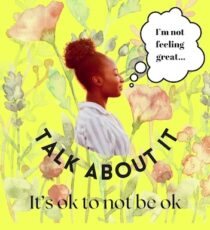
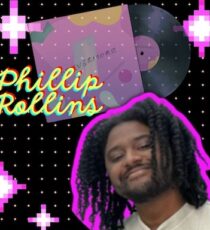
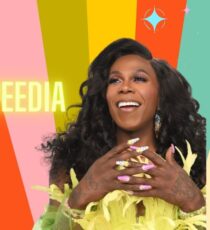
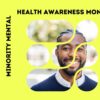
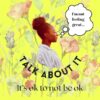
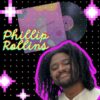
Social Menu